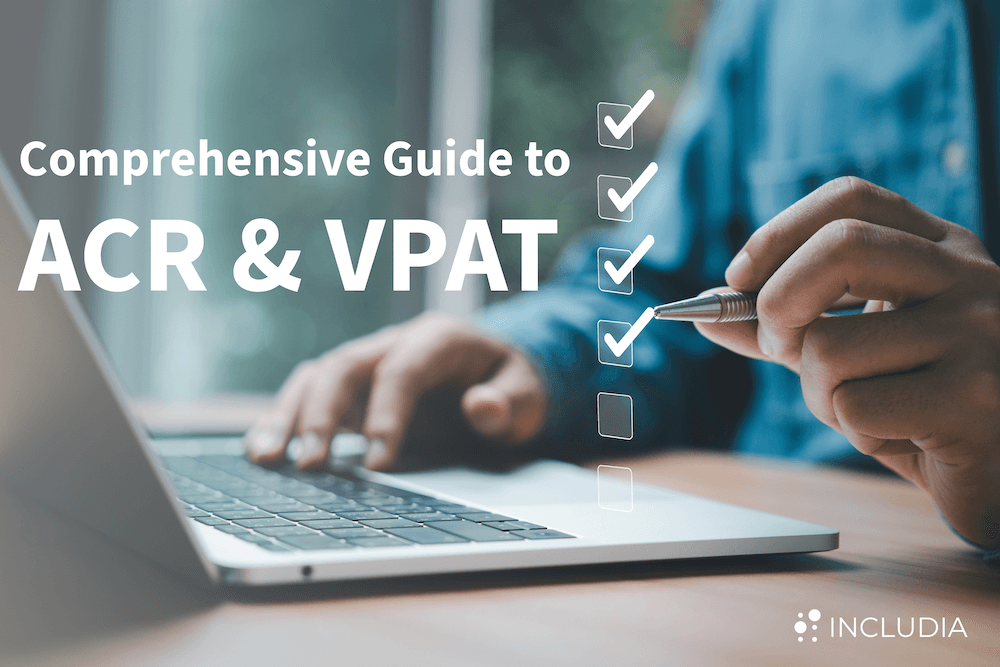When selecting technology, it is important to verify that products meet established accessibility standards. Relying solely on vendor claims or documents like VPATs may not provide a complete picture. Instead, ask direct questions about their testing methods, compatibility with assistive technologies, and ongoing maintenance procedures. The following questions are designed to help identify whether a product will meet accessibility requirements and support all intended users.
Below are key questions that will help uncover the vendor’s level of commitment and capability in offering an accessible experience.
1. What is Your Accessibility Practice?
Begin by asking how the vendor approaches accessibility from the ground up. The response should reflect a deliberate strategy, including the use of manual and automated testing tools. Inquire if they work with experienced accessibility professionals and whether they follow established guidelines throughout their development cycle. The specificity and clarity of their answer can provide valuable insights into the maturity of their practice.
2. What is the Conformance Level of the Version We Are Purchasing?
Products may appear compliant at one demonstration and then arrive in a different version that lacks the same features. Asking about the accessibility of the exact version under consideration helps prevent misunderstandings. Encourage the vendor to focus on the same iteration you will receive, rather than referencing previous or upcoming releases, so there are no unexpected shortfalls after contracts are signed.
3. Can You Provide Your Accessibility Roadmap for the Current Year?
Accessibility is never finished; it evolves alongside product features. A roadmap that outlines planned improvements, timelines, and strategies for mitigating known issues can signal long-term dedication. By requesting a roadmap, you prompt the vendor to present their vision for ongoing refinements instead of relying solely on current capabilities.
4. Can You Provide an Accessibility Conformance Report (ACR)?
An ACR, often derived from a Voluntary Product Accessibility Template (VPAT), details how a product measures up against specific standards. Requesting this document helps reveal both the areas where the product performs well and where it might fall short. This transparency is critical to evaluating product gaps before finalizing a purchase and identifying what adjustments or compensatory measures may be required.
5. How Do You Handle Software Updates and Patches with Respect to Accessibility?
Technology rarely remains static. Every update, patch, or new feature could alter the accessibility landscape of a product. Ask the vendor about their testing protocols before releases and how they address regressions. This line of questioning helps determine if the vendor treats accessibility as a core aspect of their ongoing support and maintenance rather than a one-time commitment.
6. Can You Provide References from Clients with Similar Accessibility Needs?
While documentation and demonstrations can be persuasive, real-world experiences often offer the most revealing perspective. Ask for references from clients who share similar requirements. Speaking with those users may confirm that the vendor’s product supports people with diverse needs and that the vendor delivers on stated goals.
7. How Do You Handle User Feedback Regarding Accessibility Issues, and What Is Your Typical Response Time?
Even the most thoroughly tested products can encounter unexpected challenges. The crucial factor is how quickly and effectively those issues are addressed. Asking about user feedback channels and average response times clarifies whether the vendor prioritizes ongoing improvements. Look for a process that includes communication, tracking, and timely remediation.
8. How is accessibility integrated into your design and development process?
Ask if accessibility is considered from the earliest design stages and integrated into quality assurance and developer training. This reveals whether they view accessibility as an integral part of product creation.
9. Are your documentation and tutorials accessible?
Confirm that user guides, instructional materials, and support resources are accessible to individuals with disabilities. Accessible documentation helps users fully engage with the product’s capabilities.
10. Which standards and guidelines do you reference or adhere to?
Inquire about the recognized standards—such as WCAG or Section 508—the vendor uses as benchmarks. Compliance with established guidelines typically reflects a more reliable and consistent approach.
Conclusion
Choosing accessible technology involves more than reading a VPAT or ticking off items on a checklist. It requires open dialogue with vendors, targeted questions, and careful evaluation of their answers. By asking about their practices, specific product versions, future plans, reporting, updates, references, and response protocols, you can form a more complete picture of how their product will support users with diverse abilities today and in the future.



